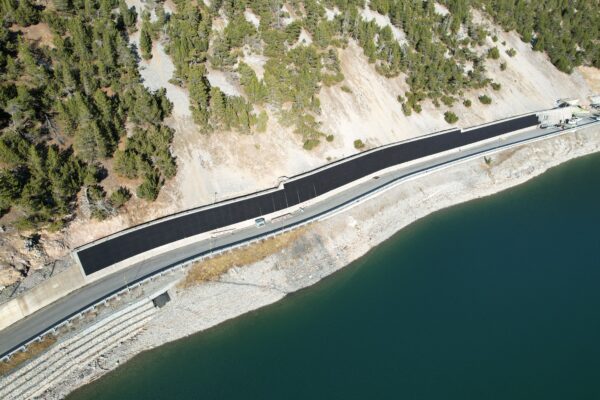Engadiner Kraftwerke recently commissioned a 201 kW PV system on a retaining wall next to its Punt dal Gall hydropower dam on Lake Livigno in the Swiss Canton of Graubunden. The system, which is using Lithuanian-based Solitek modules, is expected to generate 230,000 kWh into the local grid.
Solitek’s Swiss engineering partner, Reech AG, designed the mounting system to ensure the modules are safely clamped but also to enable easy module removal for inspections. “Being close to a road, the components of the mounting structure had to be selected considering possible corrosion caused by salt. In this respect, we provided the salt mist corrosion certification the module,” a Solitek spokesperson told pv magazine.
The plant is located at an altitude of 1,804 meters and is exposed to cold winter temperatures. The positioning of the mounting structure is optimized for irradiance and to avoid snow accumulation in winter. It is based on 478 of Solitek's Blackstar 420 W framed modules. The requirements were for a double glass module, each side measuring 2mm in thickness, and original Stäubli connectors, according to Solitek.
Founded in 2009, Solitek claims it recently achieved the “Cradle to Cradle” Gold certification for manufacturing to a high standard of environmental sustainability, energy efficiency, and social responsibility. It is part of the BOD Group, a family-owned conglomerate of high-tech companies.
Popular content
A similarly structured Swiss plant was also commissioned in December, featuring mounting equipment from K2 Systems in the Swiss canton of Appenzell Ausserhoden, and generating annually 230,000 kWh.

This content is protected by copyright and may not be reused. If you want to cooperate with us and would like to reuse some of our content, please contact: editors@pv-magazine.com.


By submitting this form you agree to pv magazine using your data for the purposes of publishing your comment.
Your personal data will only be disclosed or otherwise transmitted to third parties for the purposes of spam filtering or if this is necessary for technical maintenance of the website. Any other transfer to third parties will not take place unless this is justified on the basis of applicable data protection regulations or if pv magazine is legally obliged to do so.
You may revoke this consent at any time with effect for the future, in which case your personal data will be deleted immediately. Otherwise, your data will be deleted if pv magazine has processed your request or the purpose of data storage is fulfilled.
Further information on data privacy can be found in our Data Protection Policy.